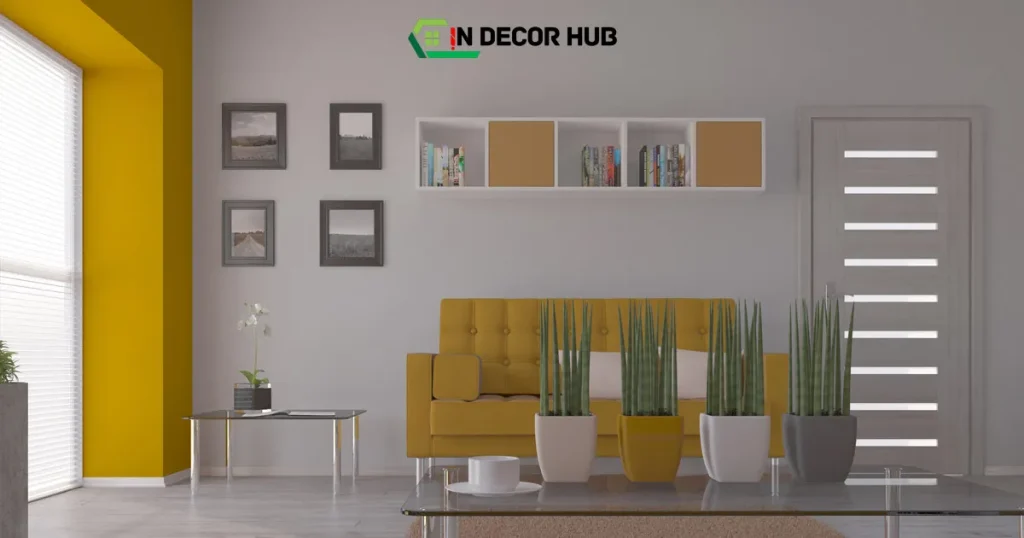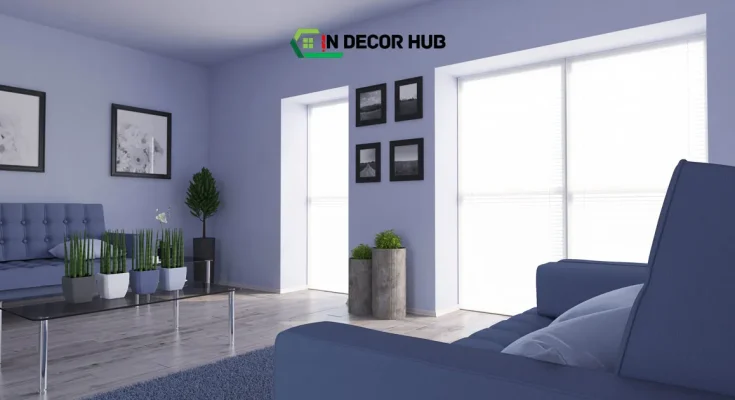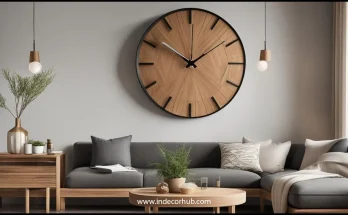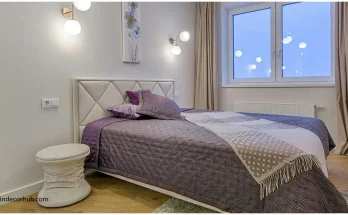To choose the best color for your living room walls, consider the room’s size and lighting. Choose hues that complement your furniture and personal style.
Deciding on the ideal wall color for your living room can transform the space into a welcoming sanctuary for relaxation and entertainment. The right shade not only reflects your personality but also influences the room’s ambiance. It’s essential to select a color that harmonizes with the natural light available and the dimensions of the room.
Smaller spaces often benefit from lighter colors to create an illusion of spaciousness, while larger areas can handle richer, deeper tones without feeling cramped. Consider your existing decor, including artwork, rugs, and upholstery, to ensure the wall color ties the room together.
Think about the mood you wish to evoke: calming blues and greens for a serene environment, or perhaps warm yellows and reds for a more vibrant, energetic setting. Remember to sample your paint choices before committing, as colors can shift dramatically under different lighting conditions. With a strategic approach, your living room can reflect the best version of your home and style.
Table of Contents
The Impact Of Color On Living Room Dynamics
Choosing the right color for your living room walls is key. This is the element that creates the feeling of the room and its style. They can give an area a feel of liveliness, coziness, or peace of mind. The power of color transforms of the living room and we start feeling different about it. It’s more than a style; it is about how the room makes you feel.
When picking a color, consider how it will affect the room’s dynamics. Colors have power. They can exchange how huge a room feels and sway our feelings. A well-chosen color makes the living room a happy place for family and friends.
Color Psychology And Emotions
Color psychology is a serious business. Different hues stir different emotions. Reds can excite, while blues relax. When choosing a wall color, think about the mood you want. Here are some common feelings linked to colors:
- Blue: Calm, secure, and stable
- Yellow: Happy, energizing, and uplifting
- Green: Restful, healing, and fresh
- Red: Passionate, dramatic, and energizing
- Neutral tones: Balance, versatility, and sophistication
Room Size And Color Perception
Room size matters with color choice. Light colors can make a small room feel bigger and brighter. By using dark hues of colors, even the larger spaces can get a warm and friendly atmosphere. Consider these tips for different room sizes:
| Room Size | Color Advice |
| Small | Go for light and bright colors to open up the space. |
| Medium | Mix warm and cool tones for balance. |
| Large | Darker hues can add depth and character. |
Starting With The Basics: Color Theory
Choosing the perfect color for your living room walls becomes simple with color theory. Color theory is the science of color mixing. It enables you to design a room where you can reign the style and strike a balance in terms of comfort. Think about the mood and feel you want in your room. Do warm tones suit you or cool tones? Let’s learn about primary colors first. These are the building blocks for all other shades.
Primary Colors In Interior Design
The primary colors are red, blue, and yellow. No other colors can mix to make these pure hues. They are used to create more colors. Red brings warmth and liveliness. Blue is calming and stable. The yellow that shines with joy and hope is marvelous.
- Red: Adds dynamism and passion
- Blue: Instills calmness and serenity
- Yellow: Introduces vibrancy and warmth
Mixing And Matching: The Color Wheel
The color wheel is a great tool. This is where a painter can display how colors blend. The primary colors which complement are green, orange, and purple. They come from primary ones. The wheel can tell you the colors that go together. It lets you explore contrasts and discover amicable solutions. It can help you to create the harmony or the contrast.
| Colors | Combination Result |
| Red and Yellow | Orange |
| Yellow and Blue | Green |
| Blue and Red | Purple |
Considering Natural Light In Color Selection
Considering natural light in your wall color selection transforms the mood of your living room. The sun’s position and your room’s exposure dictate the best color palette. Let’s break down how to choose the perfect hues with the light nature gifts your space.
Understanding Light Exposure
Grasping your room’s light exposure is crucial. Sunlight changes throughout the day, affecting wall color perception. Your living room walls can look different in the morning compared to the evening. Here’s how to evaluate:
- Track the light in your room over a day.
- Note which walls get more sunshine.
- Consider walls opposite windows for reflected light.
- Use this information to predict color behavior.
Colors For Well-lit Vs. Dim Rooms
Well-lit rooms can handle darker colors without feeling small. Rooms that receive ample sunlight pair well with cool tones like blues or greens. They cause the freshness of the atmosphere and the sweet weather of light.
| Room Lighting | Color Suggestions |
| Well-Lit | Dark shades, Cool undertones |
| Dim Rooms | Light shades, Warm undertones |
In dimmer rooms, light colors can make the space feel larger and more inviting. Warm shades like peach or soft yellows catch and reflect limited light, making the room cozier.
Examining The Existing Living Room Elements
Choosing the best color for your living room walls transforms the space. It’s not just about picking a shade you love. Your current living room elements should guide your choice. First, let’s explore the role that either furniture and fixed characteristics, or accent features and artworks play as you select your color.
Furniture And Permanent Fixtures
Start with the furniture. Look at your couch, chairs, and tables which are currently right before you. What colors and styles are they? Imagine the wall colored along the lines of the designs to create a blending effect. Here’s what to consider:
- Material and Texture: Leather, velvet, or linen influence your color choice.
- Overall Style: Modern furniture pairs well with bold hues; classic styles may need a softer touch.
- Color Palette: Neutral furniture offers flexibility; vibrant pieces require a complementary backdrop.
Permanent fixtures have a voice too. Your fireplace, trim, and built-in shelves play a role. Align your wall color to complement these fixtures. Wall color should enhance, not clash with, these features.
Accent Pieces And Artwork Compatibility
Accent pieces are like the room’s jewelry. Artwork, cushions, and rugs add personality. Your wall color needs to harmonize with these items. Balance is key.
| Item | Function | Color Tip |
| Artwork | Focus pieces | Pick shades from the art to influence wall color. |
| Rugs | Grounding elements | Use rug colors to guide your wall shade choice. |
| Cushions | Comfort & Style | Wall colors should showcase, not swallow up, these accents. |
The right wall color sets the stage for every piece in your living room. It’s the backdrop to your story. Keep in mind, that the overall effect matters more than individual items. Achieve a harmonious and inviting decor that reflects your preference and provokes comfort as you unwind.
Current Trends In Living Room Colors
When designing your living space, selecting the right wall color is critical. It creates mood, and determines your flavor, whether it is relaxing or stimulating for a person to live in. Maintaining an up-to-date trend in room colors guarantees a look of freshness and stylishness.
What’s Popular Now
Bold and warm tones are taking over living rooms. It is not confined to the act of playing on the safe side. The cool obstacle of today’s trendy bunch is the application of hues which give a feeling of joy to a living space.
- Nature-inspired greens that bring the outdoors in.
- Rustic reds that evoke a sense of warmth and comfort.
- Deep blues for a touch of sophistication.
These colors play the role of an anchor point as well as the backdrop and may push people to have discussions.
Timeless Color Choices
Some colors transcend trends, offering an elegance that lasts through the years. These universal colors go along with different styles of interior decoration and differing preferences.
| Color | Effect |
| Beige | Creates a neutral backdrop for art and furniture. |
| Soft gray | Offers a modern, yet cozy, feel. |
| Crisp white | Delivers a clean and timeless canvas. |
All colors used should make up a wonderful mix to bring out the best in your living room while managing to deliver a long-lasting trend.
Bold Colors For An Expressive Space
Choosing the right color for your living room walls transforms the space. Bold colors create an interior with energy and identity. They use any room as a platform of expression. Before you reach out for the paintbrush, let’s get to know how to turn your walls into an exceptional style statement.
Making A Statement With Color
Bold colors bring vibrancy and impact to a room. Consider the mood you want to create. Reds spark energy, while blues offer a calming effect. Consider these aspects:
- Room size: Bright colors can make small spaces feel larger.
- Lighting: How much natural light your room receives can affect color appearance.
- Furniture: Your wall color should complement your existing décor.
Reflect on its color’s tone and depth. On the whole, darker shades are dramatic, while lighter ones can make you happy.
Balancing Boldness With Harmony
While bold colors are stunning, balance is key. Use neutral shades for furniture and accessories to avoid overwhelming the senses. Here’s a guide to achieving harmony:
| Color | Complementary Neutrals |
| Deep Blue | Light grey, sandy beige |
| Emerald Green | Cream, taupe |
| Bold Yellow | White, soft gold |
Incorporate texture into your room to soften the bold color choice. Textured throws or rugs can add a cozy feel. Finally, ensure your wall paint has a suitable finish. Semi-gloss or satin finishes are often best for lively colors.
Neutral Shades For A Calm Ambiance
Choosing the right color for your living room walls transforms the space. A shade that portrays neutrality creates calmness and harmony. These colors complement different designs and furniture choices which makes them withstand time.
The Power Of Pastels And Neutrals
Pastel and neutral colors bring a sense of calm to your living room. They make rooms feel larger and brighter. Consider soft blues, gentle greens, or warm peach for a touch of color. These hues work well to create a relaxing mood without overpowering the space. Use them as a canvas for your art or pops of vibrant accessories.
Layering Textures With Neutral Tones
Choosing neutrals doesn’t mean boring walls. Add depth and interest by layering textures. You might combine a matte-painted wall with a glossy trim. Try grasscloth wallpaper, or add a stone accent wall. Each layer should harmonize, not clash. The key is subtlety.
| Texture Ideas | Effect |
| Glossy Finish | Reflects light |
| Matte Finish | Absorbs light |
| Textured Wallpaper | Adds complexity |
| Stone Accents | Brings nature inside |
Accent with different fabrics like linen or silk in your soft furnishings. The cushions, curtains, and rugs in neutral tones with different textures can be the best enhancement to the room. The balance between colors and textures in the living room can turn it into a tranquil retreat. The room must be able to hug you in and present the walls that will be the background to the smaller details of life.

Creating Illusions With Paint Techniques
Welcome to the world of optical enhancements where we explore how the right paint techniques can transform your living room. These methods not only refresh your space but create a vibrant setting with just a few strategic strokes of your brush. Jump into the paint world and get to know how it can perform magic on the walls of the room.
Color Blocking For Depth And Interest
Color blocking is not just for fashion. It brings walls to life and adds depth to your living room. Choose complementary colors or bold contrasts to create dynamic visuals. To start:
- Select two to four colors that suit your room’s character.
- Paint large blocks on the walls to divide the space visually.
- Use painter’s tape for sharp, clean lines between colors.
This method is great for drawing attention to special features in the room.
| Style | Color 1 | Color 2 | Additional Color (optional) |
| Modern | Deep Blue | White | Grey |
| Boho | Terracotta | Mustard | Olive Green |
Ombré Walls For A Modern Twist
Ombré walls make for a stunning visual effect and are surprisingly simple to achieve. You’ll need:
- Two paint colors from the same family.
- A clean, drywall.
- Sponge or soft brush.
Start with the lighter shade at the top and blend into the darker shade towards the bottom. Use a dry brush technique to smooth the transition between shades.
Quick Ombré Tips:
- Bold shades create a dramatic effect.
- Subtle pastels for calm, relaxing vibes.
- Test your colors and blending on a small section first.
Personal Preferences Vs. Resale Value
Choosing the right color for your living room walls is a big decision. It shows your taste and has the power to determine the room’s mood. Consider your likes and dislikes, but always bear in mind how this could affect the market value of your home. We are going to discuss the procedure of balancing these factors.
Choosing Colors You Love
Comfort comes first in your living room. Pick colors that make you smile. Bold colors can energize the space. Soft tones might offer a calming effect. Consider these points:
- Look at your furniture: The color should match your current decor.
- Test samples: Paint small sections to see them at different times of day.
- Your lighting: Natural and artificial light change how colors look.
Considering Future Buyers
Thinking about selling? Neutral colors appeal to more people. Consider these guidelines:
- Stay neutral: Choose beiges, whites, and greys. They work like a blank canvas.
- Think timeless: Classic colors stay in style. This means less repainting.
- Keep it bright: Lighter colors make spaces feel bigger. This is good for selling.
Use the table below for a quick guide on color choice:
| Preference | Color Suggestion | Resale Friendly |
| Warm and Cozy | Soft yellows, warm beiges | Yes |
| Modern and Chic | Crisp whites, cool grays | Yes |
| Bold and Dramatic | Deep blues, rich reds | No |
Practical Matters: Maintenance And Upkeep
Choosing the right color for your living room walls goes beyond aesthetics. Think about maintenance and upkeep. You’ll want a color that stands the test of time, is easy to clean, and doesn’t require constant touch-ups.
Ease Of Cleaning Different Paint Finishes
Selecting a paint finish is critical for maintenance. Here’s a quick guide:
- Gloss and Semi-Gloss – Ideal for high-traffic areas. These finishes resist stains and are easy to wipe clean.
- Satin – Has a slight gloss, making it suitable for walls since it’s easier to clean than flat finishes.
- Eggshell – Offers a soft sheen and is relatively easy to maintain, perfect for living rooms.
- Matte or Flat – While elegant, these finishes are harder to clean and best for low-traffic areas.
Choose a finish that matches your daily cleaning routine.
Touch-ups And Longevity
Consider the paint’s longevity and how often you’ll need touch-ups:
| Finish Type | Longevity | Touch-Up Frequency |
| Gloss and Semi-Gloss | Long-lasting | Less frequent |
| Satin | Durable | Occasional |
| Eggshell | Moderate | As needed |
| Matte or Flat | Lower | More frequent |
While matte finishes may require more frequent touch-ups, they beautifully hide imperfections. Glossy finishes are more durable but highlight flaws.
Involving A Professional: When To Hire A Color Consultant
Choosing the right color for your living room walls can transform your space. When in doubt, calling in a color consultant brings clarity. Let’s discuss ‘Involving a Professional: When to Hire a Color Consultant’ to help you make an informed decision. A color consultant combines psychology, current trends, and furniture styles to recommend the best shades for your living room.
The Benefits Of Expert Advice
- Reduced Risk: Avoid costly mistakes with professional guidance.
- Personalized Choices: Get a color palette that matches your lifestyle and decor.
- Color Harmony: Ensure all room elements work together for visual appeal.
Cost Vs. Outcome Analysis
Hiring a color consultant may seem like an extra expense, but it pays off. Here’s a comparison to consider:
| Costs without Professional | Costs with Professional | Outcome |
| Multiple paint trials | One-time consultant fee | Enhanced Satisfaction |
| Unmatched furniture | Expert color matching | Visual Harmony |
| Longer decision time | Quick, informed choices | Efficient Process |
Bringing It All Together: Final Selection
Choosing the right color for your living room walls is like the final piece of a puzzle. It’s all about making things get aligned in your room. It is crucial to like that perfect suit that corresponds with your style and at the same time gives that right ambiance you go for In the end, the choice of your companion is all about translating your dream into a practical decision.
Color Sampling And Test Patches
Color sampling is a critical step. Begin with paint swatches. Pick a few you love. Next, buy sample pots of those colors. Apply large test patches on your walls. Observe these patches throughout the day. Look at how light changes the way the colors appear. This method ensures no surprises after the final coats are applied.
- Apply samples near key furniture pieces
- Compare colors against window treatments
- View under different lighting conditions
Confidence In Your Choice
After testing, it’s time to feel confident in your choice. Trust your instincts. Remember the mood you want to create. A calm ambiance might call for blues or greens. Want energy? Consider yellows or reds. Balance bold colors with neutral furniture. Or, use neutral walls to let artwork pop. Make sure your final pick feels right for your space.
| Desired Mood | Color Suggestion |
| Calm | Blues and Greens |
| Energetic | Yellows and Reds |
| Neutral | Beiges and Grays |
Frequently Asked Questions On How to Choose the Best Color for Your Living Room Walls?
How To Choose Wall Color For Living Room?
Consider the living room size and lighting when choosing a wall color. Opt for light hues to make small rooms appear larger. Select colors that complement your furniture and decor. Factor in the mood you want to create; warm tones often evoke coziness, while cool shades offer a serene atmosphere.
What Is The Most Popular Color For Living Room Walls?
The most popular color for living room walls is a neutral shade, such as off-white or light grey. These hues create a versatile backdrop for decor.
How Do I Choose A Color Scheme For My Living Room?
Start by considering your living room’s size and natural lighting. Choose a base color that reflects your style and complements your furniture. Add contrasting or complementary colors for accents. Test paint samples on walls and observe them at different times of the day to ensure suitability.
Conclusion
Selecting the right color for your living room walls sets the mood and reflects your style. Remember, light hues expand spaces, while dark tones create coziness. Consult color wheels and test samples before deciding. Your living room’s ambiance is just a paint can away – choose wisely to make it a place you love.



